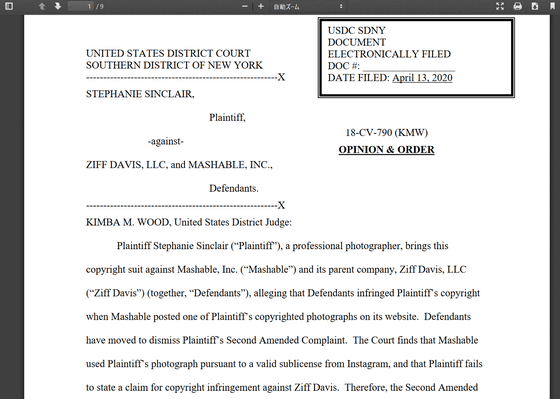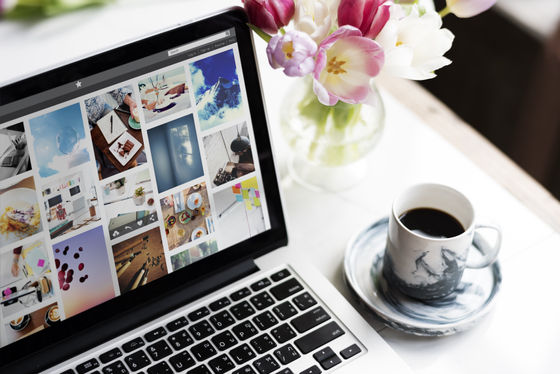Judgment that 'embedding Instagram is not a copyright infringement'

Photos on the Internet are copyrighted works by somebody and are not free to be quoted or reprinted freely, but it is generally understood that there is no problem when using official functions on the service. On April 13, 2020, the United States District Court for the Southern District of New York ruled that 'Instagram embedding' is not a copyright violation. ' Similar rulings have existed before, but this time the attention has focused on the logic the defense has developed during the hearing.
gov.uscourts.nysd.487498.31.0.pdf
(PDF file)

Judge smacks down copyright suit over Instagram embedding | Ars Technica
https://arstechnica.com/tech-policy/2020/04/judge-smacks-down-copyright-suit-over-instagram-embedding/
It started with the article '10 news photographers fighting social justice' reported by IT news site Marshable in 2016. As a fee to use the photos, Mashable presented the news photographers with an amount of $ 50 (about 5400 yen) each, but one of them, Stephanie Sinclair, refused to provide the license. Instead of using Sinclair's photo directly, Mashable cites Sinclair's photo from his official Instagram account using the 'embed' feature, and Sinclair sued Mashable for copyright infringement.
'Instagram embedding' refers to the following:
According to Ars Technica, an IT news site that reported this case, this kind of legal controversy is being argued over a logic called 'server test' that focuses on 'where the work is distributed' It was When using the embedding function, the copyrighted material is only downloaded from the 'server for that service'. In other words, in this case, 'Mashable's article displayed a photo of Mr. Sinclair downloaded from the Instagram server.' For this reason, most courts have determined that 'the copyrighted work is not distributed or displayed to users', and have decided that 'embedding does not constitute direct copyright infringement'. .
However, not all courts accept this so-called 'server test' logic. In the past, 'To display the copyrighted material in the user's browser without the permission of the copyright owner is a fact', 'displayed Tom Brady 's photo using Twitter's embedded function There is also a ruling that the article made is a copyright infringement.

Thus, 'server testing' was a controversial issue. But in this case, Mashable's defense team took a completely different approach. According to the logic developed by the defense lawyers, 'When Sinclair uploaded a photo to Instagram, Sinclair gave Instagram a license that' you can use the photo. ' Instagram has the right to sublicense photos to others. ”It is synonymous with being sublicensed by Instagram because Instagram's embedding feature is part of Instagram's service.” did.
In fact,

Judge Kimba Wood, who was in charge of this case, said, 'Sinclair did not directly license Mashable. However, Sinclair gave Instagram the right to sublicense and Instagram gave Mashable a photo. We have granted a sublicense that allows us to view. '
There are various precautions for using such copyrighted material. One is when a third party other than the copyright owner uploads the image or video. Of course, these images and videos are piracy, even if they use embedded features.
Also, just because an image has been uploaded to an online service like Instagram, if you don't use 'official features' like the embedding feature, you are infringing copyright. Net services can grant sublicenses only when using official features, so if you do not use official features, you need to negotiate a license with the copyright owner.
Related Posts:
in Web Service, Posted by darkhorse_log







